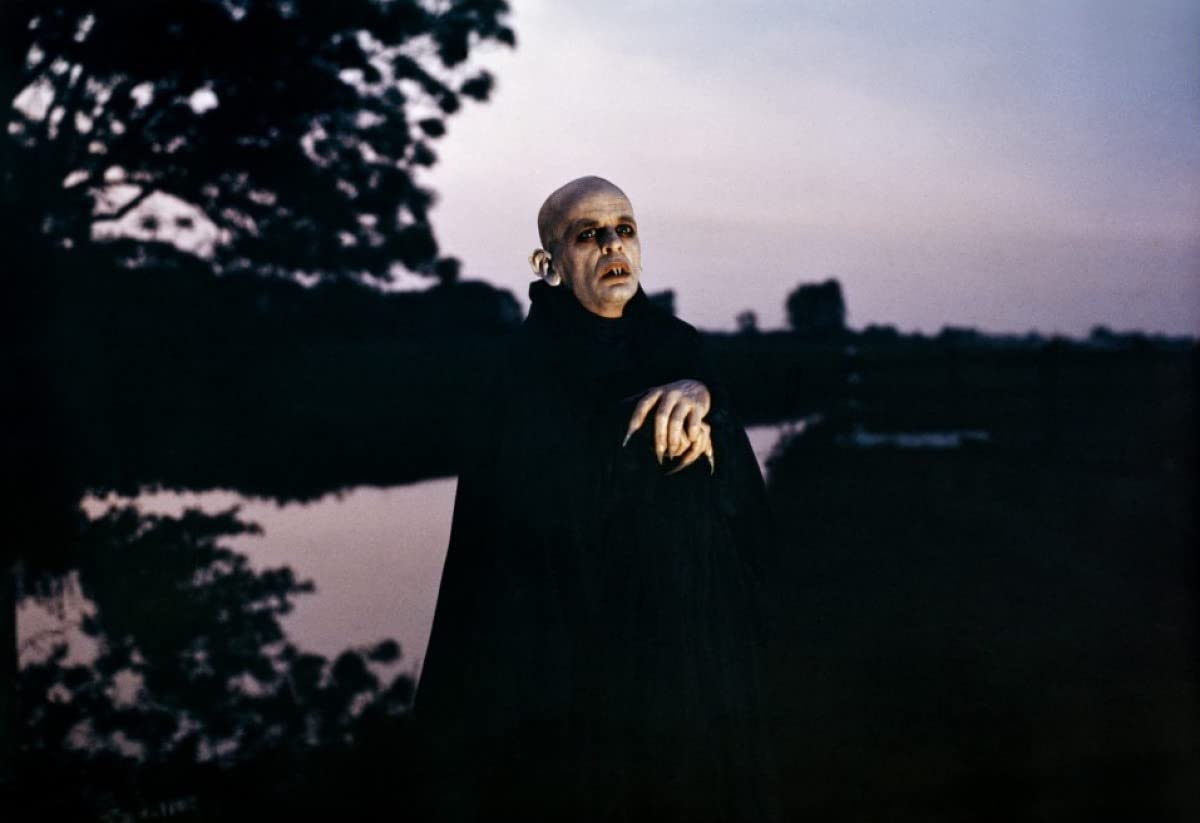A Cinematic Experience: Nosferatu the Vampyre
23 December 2022 | ERT: 1 min
Werner Herzog is a versatile master of cinematography. I remember seeing his Grizzly Man (2005) and listening to him narrating Timothy Treadwell’s incredible story. Now, Nosferatu the Vampyre (1979) is a whole different story, and not just another shot at Bram Stoker’s Dracula.
Herzog’s shots are mesmerising, in the ’70s’ horrors sense of the word There’s an extensive use of close-ups, a shade of white so cold that it is barely white anymore, and the (micro-)movements of the camera that resembles modern-day hand camera horrors. The dreamlike sequences are exceptionally convincing; however, the slow pace of the movie with the genre’s ubiquitous suspense adds up to hard-to-consume “cinematic experience”, and we’re not accustomed to such movies.

As a person who struggled through fantastic movies like The Cabinet of Dr Caligari (1920), I found it strange how much the language of movies, especially thrillers and horrors, has changed during the last three decades. Back in the ’70s, filmmakers had to apply creative solutions, acrobats and trick shots to thrill their audience. In a way, The Exorcist (1973) paved the way for today’s supernatural horrors with a rotating head sprinkling vomit all around in the room and an acrobat coming down the stairs in a bridge.
Now, as I’ve said, Herzog’s movie is much slower, therefore it doesn’t allow for such solutions. It’s not really horrifying, there’s not one scene that we can describe as such (except for the rats, perhaps, who, incidentally, were Hungarian rats); it could be captivating, though, a little disquieting. In a way, unforgettable, even, at least the following four scenes are:
- Roland Topor's every moment as Renfield (he could have been given more screen time);
- the sneezing kid when the ship arrives to Wismar;
- Nosferatu arriving to Wismar, as happy as a clam, and seems to have found his dream home (with uplifting runs of violin in the background, of course);
- a burlesque conversation between Rijk de Gooyer and Clemens Scheitz on arresting Van Helsing.
The slow pace of the movie may have something to do with the fact that it is an homage movie imitating an 1922 silent movie, Nosferatu. With Nosferatu the Vampyre, Herzog pays honour to “the greatest German film”. Well, me and Herzog, we might be namesakes, but we’re clearly not playing the same game.
Comments